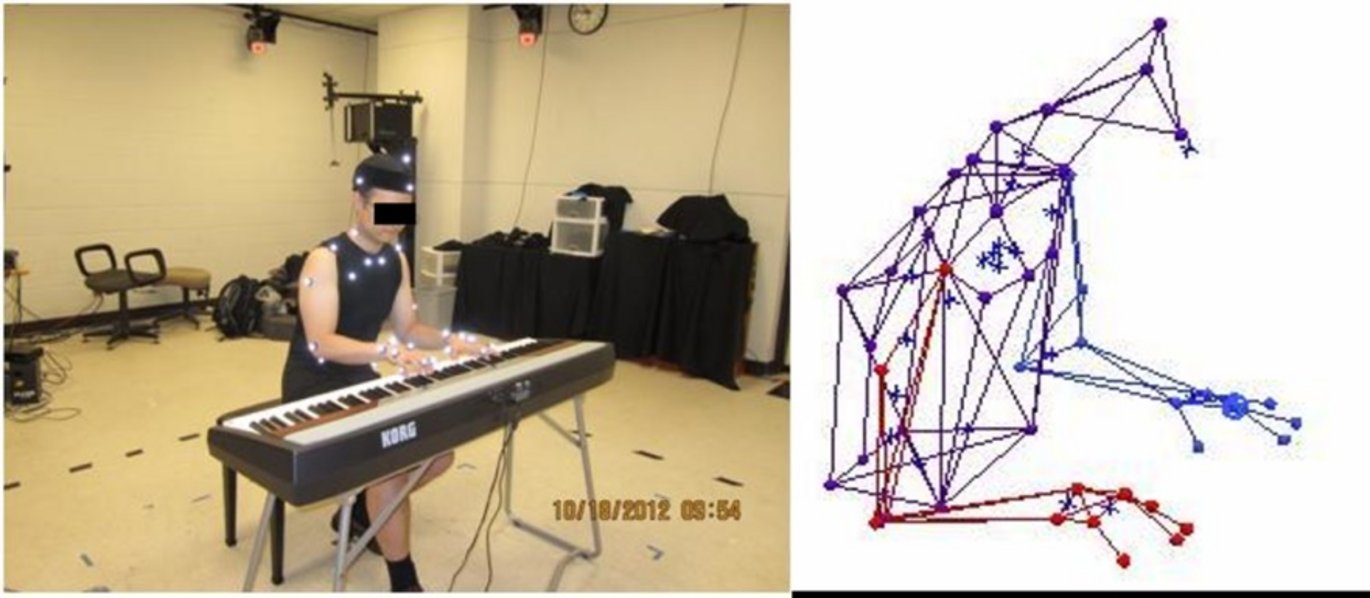Music In the Brain Guest Talk: Cynthia M. Grund & William Westney
The MIB group is hosting a guest talk with Cynthia M. Grund, Associate Professor of Philosophy, Department for the Study of Culture, SDU and William Westney, Paul Whitfield Horn Professor of Piano, Browning Artist-in-Residence, School of Music, Texas Tech University

Info about event
Time
Location
CFIN meeting room, 4th floor, AUH building 10G, Nørrebrogade 44, Aarhus C.
Organizer
Viewing Piano-playing Avatars in an fMRI-Scanner: What Motion Capture and Brain Scans Reveal about (1) the Effects that Intentions Can Have on the Way Pianists Perform and (2) Audience Perception of these Performances
Cynthia M. Grund, Associate Professor of Philosophy, Department for the Study of Culture, SDU
William Westney, Paul Whitfield Horn Professor of Piano, Browning Artist-in-Residence, School of Music, Texas Tech University.
Abstract: Joint center analysis, a technique commonly used for posture and motion analysis in human modeling and biomechanics, turns out to be quite revealing when used on pianists in order to determine if there is a significant difference in movement when pianists are asked to play in one of two ways: focusing on correctness or on enjoyment.
In the experiment that provides the basis for this presentation, four pianists each performed the same two short pieces while fitted with sensors in a motion capture laboratory. Unaware of each other’s experimental experience, each was first asked to perform each piece as correctly as he or she could, and, the second time around, simply to enjoy playing the piece. Eight (other) subjects were then placed in an fMRI scanner – four trained musicians and four non-musicians who were identified as appreciators of classical music. Each of these eight fMRI subjects watched and listened to performances by the avatars (the performances were varied across fMRI subjects). The subjects each had to answer the same battery of questions about each performance witnessed while in the fMRI machine - questions posed so as to be answerable on a 7-point Likert scale.
This presentation will thus:
- Briefly outline the details of the experimental setup.
- Show what motion capture analysis alone reveals about the movement characteristics of pianists when playing in varied intentional states.
- Present the implications that the coupling of motion capture with fMRI analysis suggests for further research on the relationship between the quality of engagement a musician manifests in performance and the reception of the performance by audience members.
- Discuss some of the new perspectives this experiment and ones like it can cast on the role of form in philosophical aesthetics of music
http://www.soundmusicresearch.org/TRA.html contains a video that gives the background for the project.
For more information about the guest talk,
please contact:
Bjørn Petersen: bjorn@pet.auh.dk
ALL ARE WELCOME
